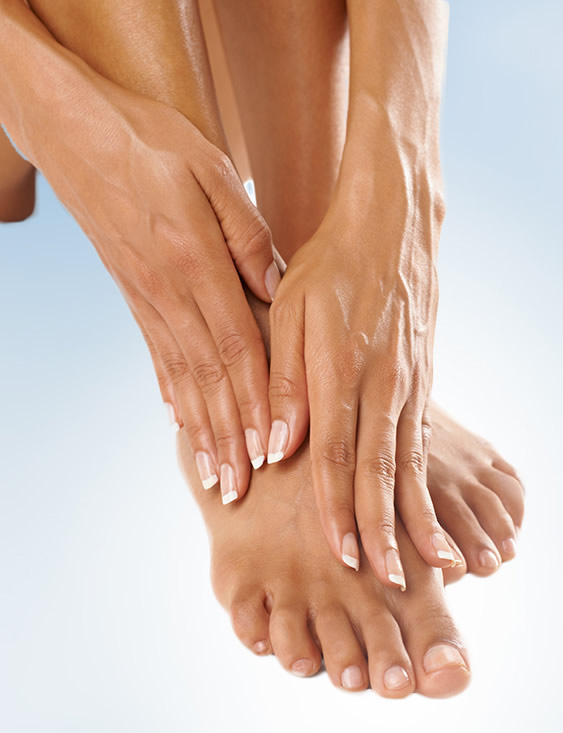
Warts
Warts can be an inconvenience and unsightly, but apart from cosmetic issues, warts can also be uncomfortable or even painful, especially in sensitive areas of the body that experience periodic contact. Warts are a cosmetic issue that, depending upon location, may make you feel self-conscious or even embarrassed, and a particularly severe or painful wart can even interrupt your daily life and activities. Our dermatologists can address your particular case with minimally invasive and safe techniques in order to remove your warts and treat any of the discomfort or pain associated with them.
What are warts?
Also known as verruca vulgaris, warts are a common dermatological problem that can be spread through skin-to-skin contact. Although warts are not cancerous and in most cases, not a danger to your health, they can be unappealing and cause discomfort and even pain. A wart is a skin growth that forms as the result of an infection caused by human papillomavirus (HPV). There are numerous different strands of HPV, and some of these strands cause warts to form on the skin. Warts can appear anywhere on the body, but they mostly appear on the feet and hands. A particular strand of HPV, however, can cause genital warts.
Characteristics of warts include:
- A rough texture
- A white, pink, brown, or red color
- Grainy bumps or growths
- An appearance of black dots on the growth (blood vessels)
What types of warts are there?
There are many different kinds of warts, but common warts include plantar warts, flat warts, periungual warts, filiform warts, and genital warts. Depending on the severity and kind of wart you are suffering from, our dermatologists can create a wart treatment regimen that will help control, reduce, and ultimately treat your warts.
Plantar warts grow on the bottom of your feet, and these particular warts grow inward into your skin. These warts are more prone to grow in parts of your sole that experience the most frequent amount of pressure while you are walking, and when you have these warts, walking can be uncomfortable and painful. Plantar warts are, in most cases, not a serious health risk, but some patients may experience pain when walking or applying any pressure to the foot.
Flat warts most commonly occur in adolescents and are smooth and flat in appearance. In actuality, flat warts are slightly elevated and raised above your natural skin line, similar to a small mole. Flat warts can be treated for cosmetic reasons, but more importantly, they should be treated promptly if they are irregularly colored, bleed, ulcerated, forming clusters of warts that merge together, or rapidly growing.
Periungual warts form around the finger and toenails and can be difficult to detect in the early stages. These warts begin as smooth growths that are less noticeable until they grow larger and take on a rough, cracked texture. What sets these warts apart from others is how rapidly they can spread and grow on the surrounding tissue. These warts, apart from cosmetic issues, can cause a host of problems, and if they are not treated, these warts can lead to a permanent reformation of the toenail or even a serious infection within the toe bed.
Filiform warts, also known as facial warts, mainly form around the nose and mouth, but they can grow around other regions of the neck and face, as well. Long and flesh-colored, filiform warts can induce feelings of itching and discomfort. Despite being benign, these warts can become inflamed or irritated, especially because the location of the wart is often in a particular part of the face that experiences friction periodically.
Genital warts occur within the pubic region, on the genitals, in or around the anus, or even in or around the vagina. These warts can be reddish pink bumps that are pronounced, or they can even be pinpoint small and hard to detect in some cases. Genital warts can cause discomfort, pain, itching, and even bleeding due to the sensitive tissue of the groin. Symptoms of genital warts include sores, blisters, or warts in, on, or around the genitals, pubic region, or anus, stinging, pain, or itching while urinating, or vaginal or penile discharge.
| Common Wart Types | |
| Plantar Warts | Commonly form on the sole of your feet where the most pressure is applied. Can make walking or standing uncomfortable. Grow inside your skin, as opposed to outside. |
| Flat Warts | Occur mostly in adolescents. Are slightly raised or elevated in texture. Should be treated if warts are irregularly colored, discharge, bleed, merge, or are ulcerated. |
| Periungual Warts | Lesser known type. Affects the toe and fingernails. Start out as smooth warts but develop a rough, scaly, dry texture. Can proliferate and grow quickly. May lead to issues with the nailbeds or infection. |
| Filiform Warts | Also called facial warts. Form around the nose and mouth but can also form around the chin and neck. Can become irritated or uncomfortable due to friction. |
| Genital Warts | Warts that occur on or in the pubic area, genitals, or anus. Can vary in size and sometimes be hard to detect. May cause pain, burning sensations, or itching while trying to urinate. Can cause penile or vaginal discharge in some cases. |
What is Molluscum Contagiosum?
Molluscum contagiosum is an infection brought on by a poxvirus, and this virus causes mild lesions or skin growths on the body. The lesions, referred to as mollusca, are small, elevated bumps, similar to warts. These lesions can vary in size from two to five millimeters in diameter and can also become itchy, painful, or inflamed. This condition can take up to four years to heal unaided, so medical intervention can help reduce and address any discomfort or cosmetic issues. Topical agents are a possible treatment for molluscum contagiosum, and they are applied directly to the affected area. After the application, a bandage or gauze will be applied. Some topical agents cause a blister to form around the affected area. The creation of this blister allows our dermatologists to remove the lesions, as the blister elevates the lesion away from the skin.
What wart treatment options are there?
Warts can be treated in many different ways. We will help choose the best course of action to most successfully meet your goals, improve your health, and maintain your safety. The main wart treatments are cryotherapy, topical agents such as retinoid creams, and laser surgery.
Cryotherapy involves the use of liquid nitrogen, which will be applied to the wart or affected area. Once the wart freezes, a blister will form around the wart. After an initial healing time of one to two weeks, the wart will slowly decay, and after this time, the dead skin and wart will fall off. In some cases, a local anesthetic is applied to minimize any discomfort during the procedure. Multiple treatments may be needed depending on your particular case and wart type.
A topical agent like a retinoid cream or ointment may be prescribed to you to help treat your wart without surgery. This treatment is initially attempted as it is the least invasive procedure, but it is not a guaranteed solution to wart removal. Topical creams and ointments require a daily regimenn and application that can last one to four weeks before improvement is seen. If these topical agents do not work, a different course of action or therapy may be recommended to provide the most successful results.
Laser surgery for wart removal utilizes a high-powered beam of light to burn away the unhealthy tissue of the wart. In some cases, a local or general anesthesia may be used to minimize discomfort and pain. Laser wart removal destroys the blood flow to the wart, which is how the wart continues to live and grow. After stripping away the unhealthy tissue and connection of blood to the wart, the wart will die and fall off after the procedure.
How can I learn more about wart removal?
Our dermatologists would be glad to discuss wart removal with you. To request a personal consultation with our dermatologists to discuss wart removal, please request an appointment online or call 212.838.0270.


